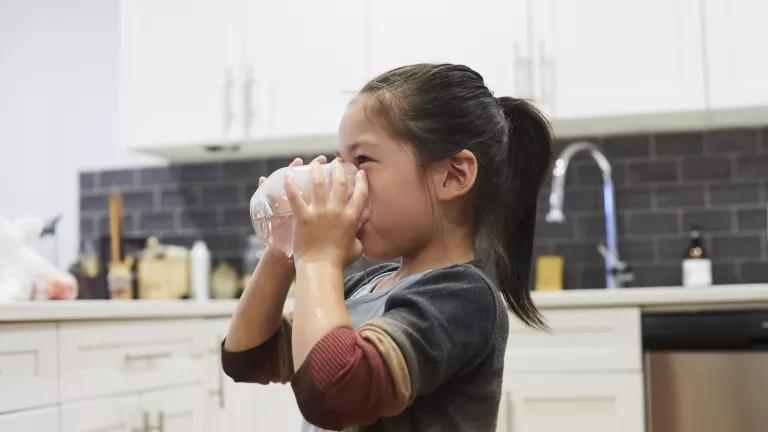House Committee Makes Historic Water Investments
A key House committee expected to approve major historic investment in removing lead pipes and in fixing deteriorating drinking water infrastructure.

On Monday, September 13, the House Energy & Commerce Committee is expected to pass a reconciliation package that would make crucial and historic investments in improving the drinking water for hundreds of millions of Americans. These investments are urgently needed to protect our health and would begin to address decades of underinvestment in our aging, deteriorating drinking water infrastructure. They also would create tens of thousands of jobs.
Among the most important water provisions are:
- Lead service line replacement. There are 9 to 12 million lead service lines—the pipes that connect homes to the water main in the street—serving tens of millions of Americans in all 50 states. The committee’s package makes a critically-important $30 billion investment in replacing lead service lines. Of this, $20 billion is reserved for grants to low-income or “disadvantaged” communities. This $30 billion would supplement the $15 billion in the bipartisan Senate infrastructure package to provide the full $45 billion requested by President Biden to replace “100 percent” of the nation’s lead service lines. The committee’s language would prohibit partial removal of lead service lines, a problematic practice many water utilities have used where they saw off a lead service line at the property line and leave the rest of the lead pipe in the ground. These partial replacements have been shown to increase lead levels in drinking water for some time, as dislodged and leached lead surges through the pipe, contaminating tap water. Investing in lead pipe replacement would create many jobs; a recent study Environmental Entrepreneurs and the plumbers and pipefitter labor union (UA) showed that investing $45 billion in lead pipe removal would not only provide enormous public health benefits to tens of millions of children and adults, it would create 56,000 jobs that will last at least 10 years (560,000 job-years) and inject about $104 billion into the nation’s economy. (§30301)
- Low-income household water assistance program. The package would fund $500 million for the Department of Health and Human Services’ low-income household water assistance program. That program is just getting off the ground using about $1.1 billion funded by previous COVID relief legislation. This funding is intended to help millions of families struggling to pay their water bills to make ends meet by providing emergency funds to support them. While of course this funding is welcome, the need far outstrips this investment, with over $1.6 billion in water bill arrears just in California and New York City and a national need estimated at more than $8 billion per year. We join frontline partners urging that a permanent program be created at EPA to help low-income consumers with their water bills. (§30311)
- Lead in school drinking water. The measure would provide $700 million to schools and childcare facilities to address lead-contaminated drinking water. This includes $500M for lead filtration stations, or centralized water fountains with independently certified lead-removing filters that children can use to drink from or fill their water bottles. This is a cost-effective solution to addressing lead threats in school water rather than putting all the funds towards testing. (§30305)
In addition, several other important drinking water priorities are addressed, including:
- Colonias. The colonias—low-income border communities that often lack safe drinking water and sanitation—would receive $100 million to address their urgent drinking water needs. (§30304)
- Native American Reservations. Native Americans are often live in low-income communities on reservations without access to water or with contaminated water. The package would provide $100 million to address Indian Reservation drinking water problems. (§30306)
- Low-Income “Disadvantaged” Communities. The package includes $200 million for “disadvantaged” and “underserved” communities’ drinking water. These are defined as communities that meet state “affordability” criteria considering low income and water costs, or that have residents who lack access to safe water or sanitation. (§30308)
- Monitoring for emerging contaminants. The measure would provide $100 million for unregulated contaminant monitoring; EPA recently proposed to require testing for dozens of forever toxic chemicals called PFAS in tap water, and this would help fund such testing. (§30309)
Other drinking water investments include:
- $100 million for technical assistance for small systems (§30310)
- $500 million is for water system risk and resilience grants (§30302)
- $100 million for areas affected by natural disasters (§30307)
- $100 million is for state drinking water programs (§30303)
The package—especially when combined with the bipartisan Senate infrastructure bill—would represent the most significant and historic commitment to drinking water protection and improvement the federal government has ever made.



